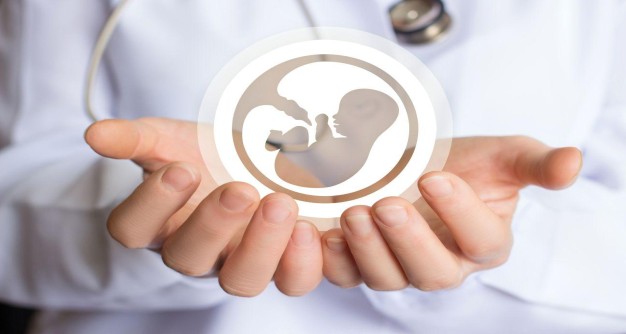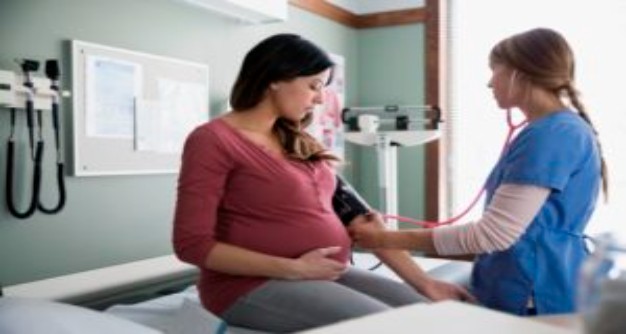High Risk Pregnancy Care in Greater Noida
City Medical & Fertility Center specializes in high-risk pregnancy care, providing expert pregnancy specialists to ensure optimal health for both mother and baby.
High-Risk Pregnancy Doctor in Greater Noida
At City Medical & Fertility Center, we prioritize the health of high-risk pregnancies. Located conveniently in Alpha 1, Greater Noida, and Sector 150, Noida, UP, our expert High-Risk Pregnancy Doctor team, led by Dr. Anjali Vaish, provides personalized care for both mother and baby. From routine gynecology and obstetrics to specialized treatments for skin & cosmetic issues, diabetes, and endocrine disorders, we’re dedicated to ensuring a safe journey for you and your baby during high-risk pregnancies.


Trust In City Medical & Fertility Center
What is a High-Risk Pregnancies?
This is a pregnancy where the chances of problems for the baby and mother are high. These may arise because of different things, such as;
Maternal age
Early childbearing (less than 18 years) and advanced maternal age (above 35) are risk factors.
Pre-existing medical conditions
Diabetes, hypertension, autoimmune diseases, and chronic illnesses can all influence pregnancy.
Medical conditions during pregnancy
Gestational diabetes, preeclampsia, placenta previa, etc.
Multiple births
Having twins, triplets, or more increases the risk of complications.
Lifestyle factors
Smoking cigarettes, drinking alcohol, and drug addiction have negative consequences.
History of pregnancy complications
Previous miscarriages, preterm labor, congenital disabilities, etc.
Our Approach to High Risk Pregnancy Treatment
At City Medical & Fertility Centre, we trust in prioritizing high-risk pregnancies. With a good knowledge of your health background and other factors, we will develop an individualized plan leading to recovery from the condition. It is done through:
Identification of High-Risk Early
We offer comprehensive pre-conception-conception care and assessments that help us identify risks before they become serious.
Close surveillance
Ultrasound scans, genetic tests, and non-stress tests are some prenatal diagnostic procedures used to monitor your condition and the baby's.
Collaboration with specialists
We may work with cardiologists, endocrinologists, and neonatologists to ensure that we provide integrated care based on your needs.
Patient education and support
To make communication open, we give you educational resources so that you know more about your condition. We also provide emotional support through counseling and support groups.
Delivery planning
We will discuss and plan the safest delivery method for you depending on your situation, which could be vaginal birth or cesarean section.
Treatments We Cover Under High-Risk-Pregnancy
Effective Antenatal Care
Conception Counseling and Management
Consultations for Maternal-Fetal Medicine (MFM)
Management of Pregnancy Complications
High-Risk Delivery Services
Benefits of Receiving High-Risk Delivery Service at City Medical & Fertility Center
Experienced team
The experts, our qualified obstetricians, perinatologists, and nurses are experienced in the handling of high-risk pregnancies.
Advanced technology
Our prenatal testing and monitoring uses modern equipment to promptly ensure correct diagnosis and intervention.
Integrated care
Our center is a one-stop-shop for various services that ensures ease of management and less anxiety.
Personalized approach
We craft nursing plans for your unique problems or requests.
Patient-centered communication
We believe in open communication with patients and answering all their questions.
Book an Appointment With Our Gynecologist in Greater Noida
Feeling anxious about a pregnancy that is not completely safe for your health and the life of your child? Trust me, you are not the only one feeling this way. Do you know that City Medical & Fertility Center has been there for all those in need? We will take care of everything. Book a chat session with our high risk pregnancy specialist today on healthy pregnancy journey providers. Call now or visit us at our website.
Frequently Asked Questions
Among others, some of the extra tests that your doctor might recommend include:
• Amniocentesis or Chorionic Villus Sampling (CVS): You will find these to be diagnostic prenatal tests that help in confirming chromosomal errors within a fetus.
• Fetal non-stress test (NST) or biophysical profile (BPP): These evaluate fetal well-being in pregnancy.
• Detailed ultrasounds: More detailed images of the baby baby’s anatomy and development can be obtained from these scans.

